EduExo Lite – The Robotic Exoskeleton Kit
The EduExo Lite contains the hardware to assemble and program an elbow exoskeleton. In the box, you will find a microcontroller, sensors, plastic parts, textile cuffs, a motor, and many smaller parts such as cables, plugs, and screws. To assemble it, you need a few tools, such as screwdrivers, a soldering iron, and a PC to program it.
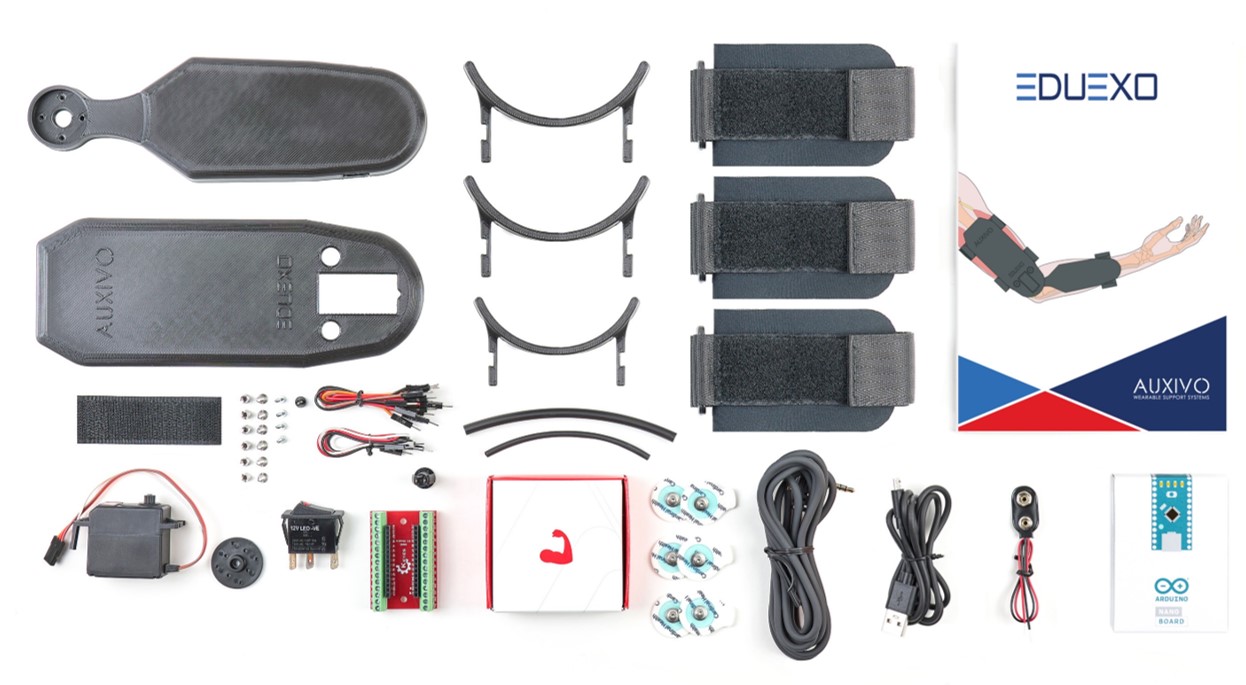
Handbook Content
The EduExo Lite handbook comprises seven main chapters introducing you to state-of-the-art exoskeleton technology. All chapters have a theoretical part that teaches you in-depth knowledge about exoskeletons. In addition, most chapters have a tutorial section that guides you through the following assembly and programming steps to build your exoskeleton with the hardware provided in the box.
Chapter 1: Introduction
The first chapter introduces the field of robotic exoskeletons – examining exoskeleton history, examples of existing systems, their functionality, and their applications.
Chapter 2: Anatomy and Mechanics
The second chapter covers the basics of human functional anatomy and exoskeleton mechanics. It then gets hands-on with a tutorial on assembling the EduExo Lite.
Chapter 3: Electronics
This chapter teaches the basic electronics knowledge and skills needed to connect all EduExo Lite’s electronic parts safely.
Chapter 4: Software
This chapter covers the software that turns the mechanical exoskeleton into a robotic exoskeleton. It contains source code examples for all exoskeleton core functions.
Chapter 5: Basic Control Systems
Chapter five introduces control systems. It discusses, implements, and tests different controllers that define the exoskeleton-user interaction.
Chapter 6: Advanced Control Systems
The control system’s most important task is to ensure that it provides support when needed. To do so, the user’s movement intention and physical load are valuable information. They can be estimated using muscle activity.
Chapter 7: Virtual Reality & Video Games
Virtual realities and video games can be used with exoskeletons. They are, for example, used to increase motivation in patients who use exoskeletons for rehabilitation, e.g., after a stroke. In this chapter, we create our own video game and use EduExo as a game controller and feedback device.
Important Quick Facts
Our EduExos are educational systems. To ensure that your expectations match our intentions, here are some quick facts about our EduExo products.
What they are:
- Educational robotics kits that will help you learn about wearable exoskeleton technology.
- Do-it-yourself kits that require active participation and willingness to learn new things.
What they are not:
- They are not medical devices intended to be used for any medical application.
- They are not exoskeletons that will make you super strong. The actuation is only intended to illustrate basic exoskeleton principles.
- They are not robots that work out of the box. You have to make them work. That is a feature!
For whom they are:
- This is for teachers and professors who want to set up exoskeleton courses or labs.
- This is for researchers looking for a versatile exoskeleton research platform.
- This is for high school and university students who want to learn about robotic exoskeletons.
- This is for makers and hobbyists looking for a fun project in a fascinating field.

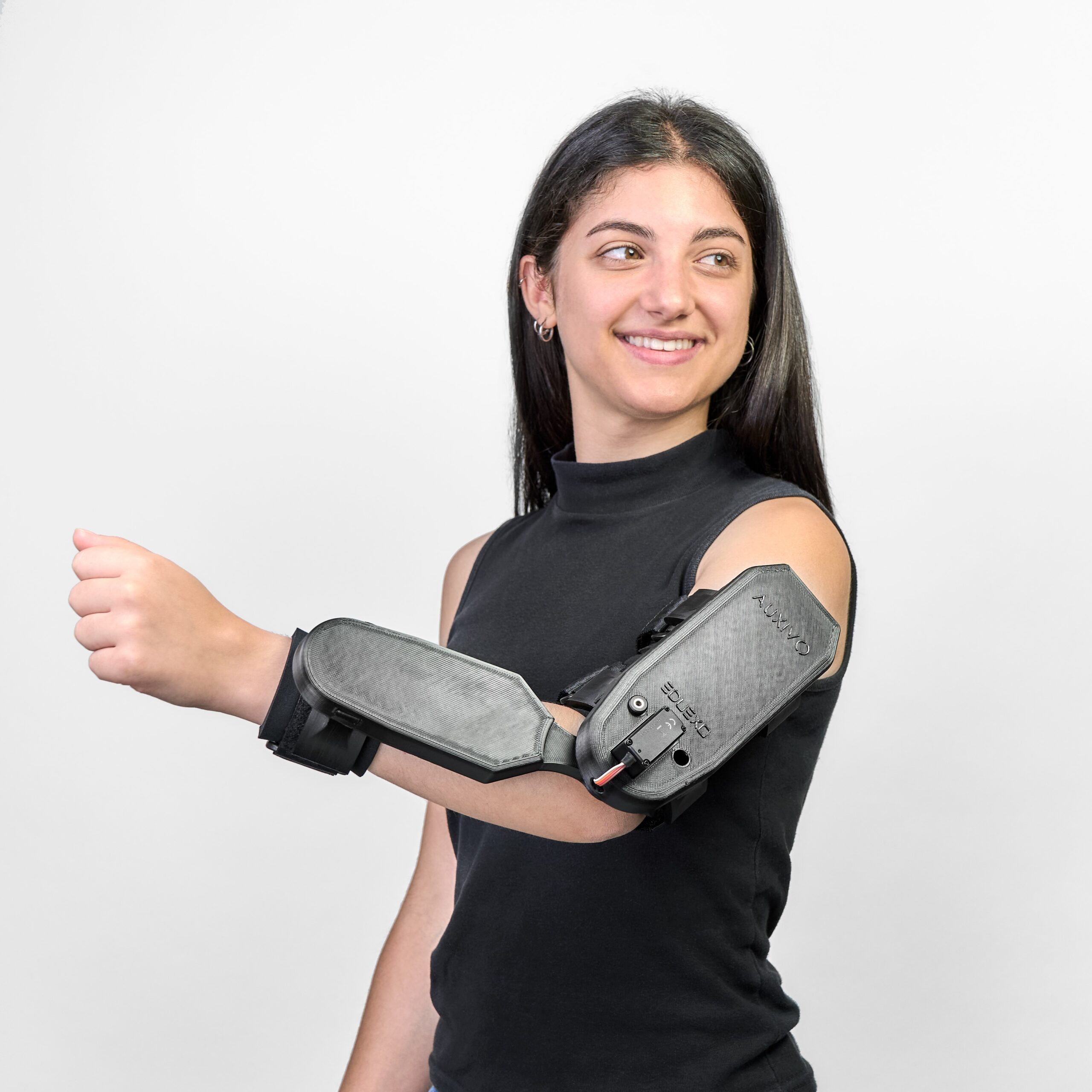
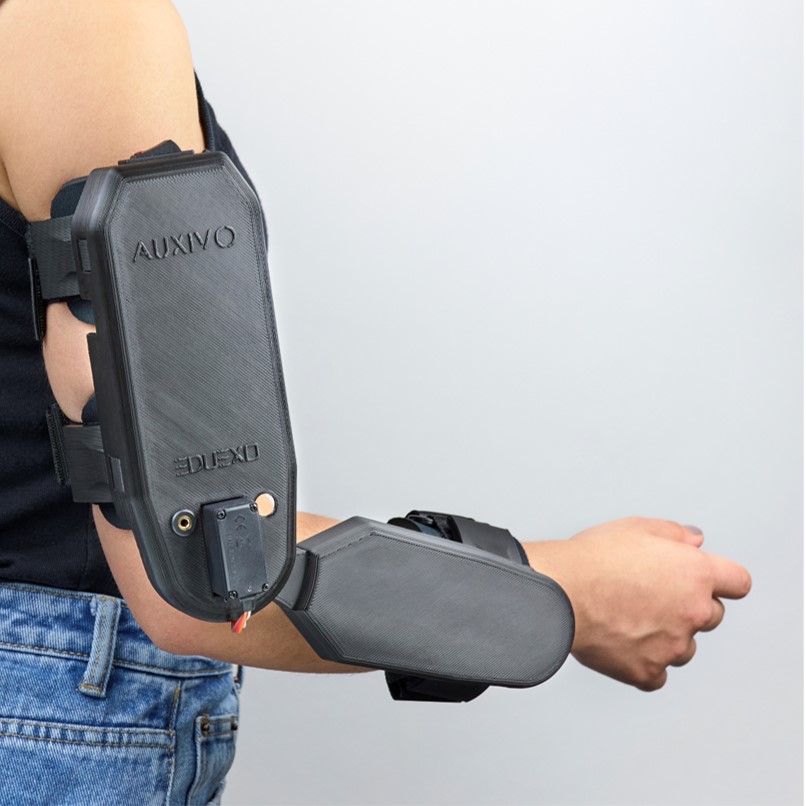
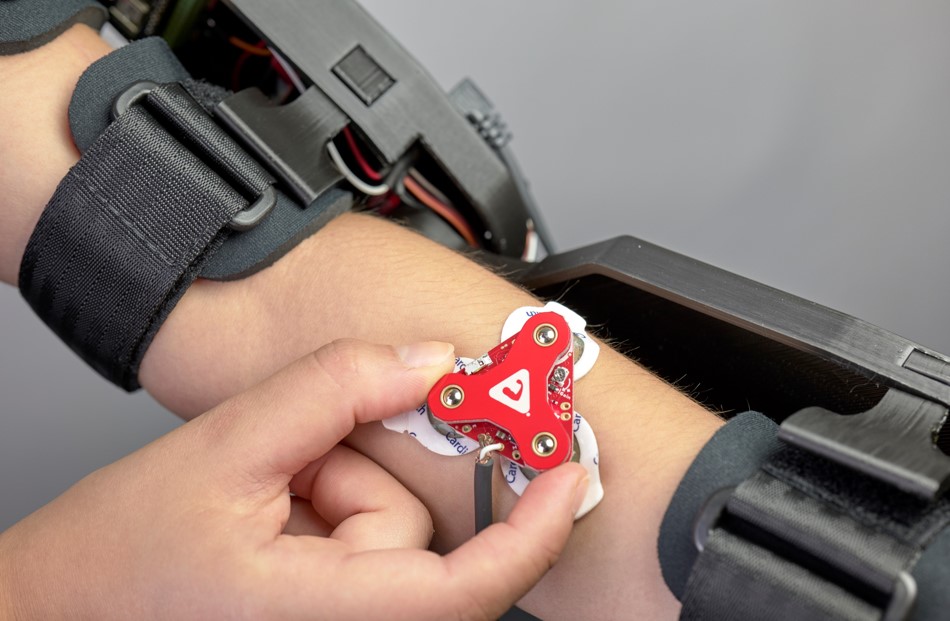
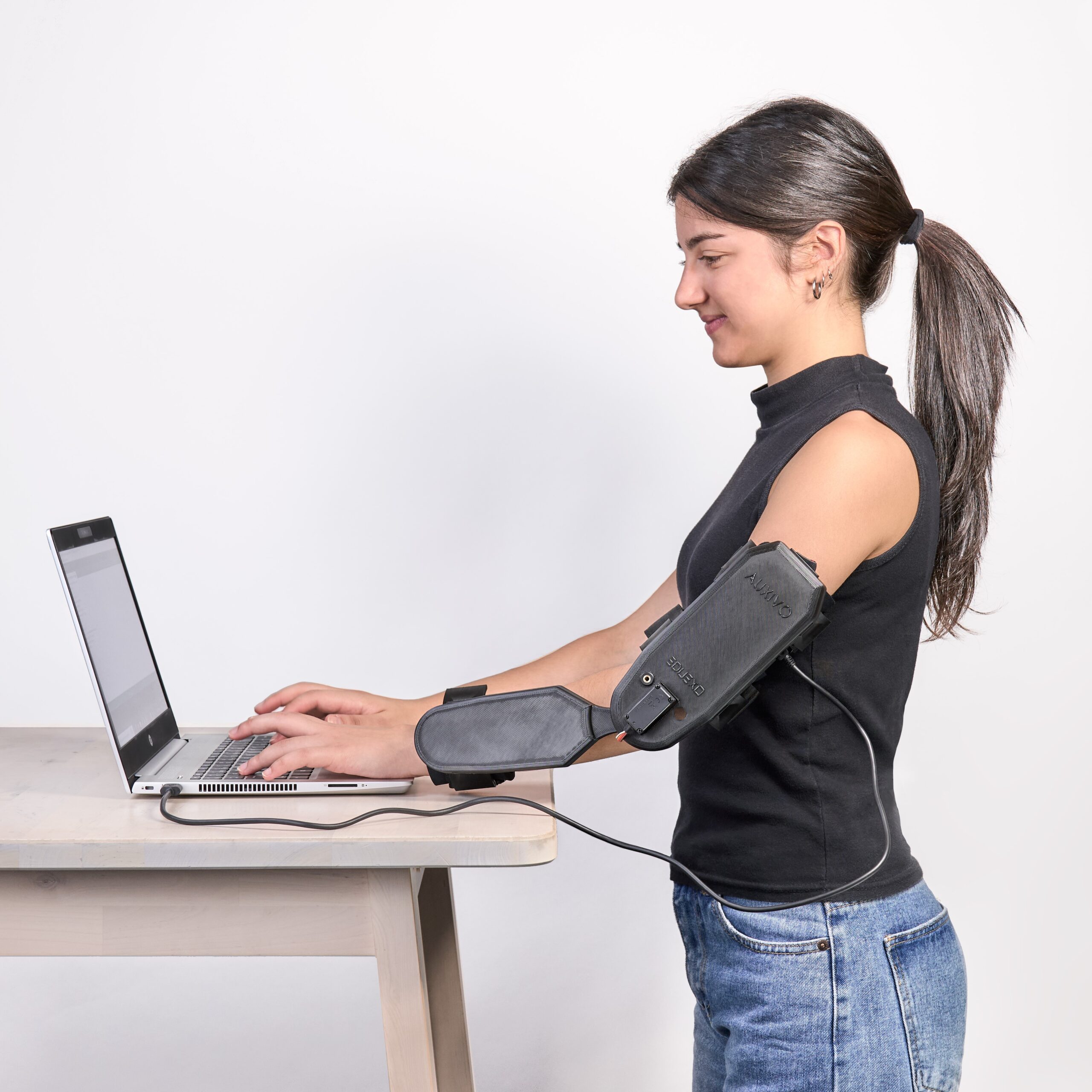
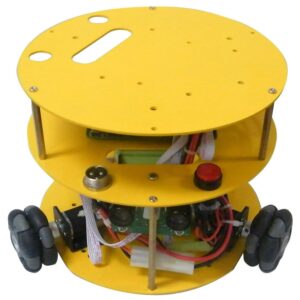
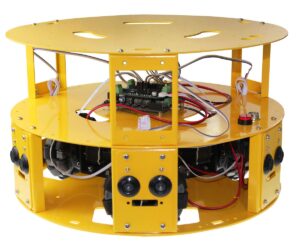
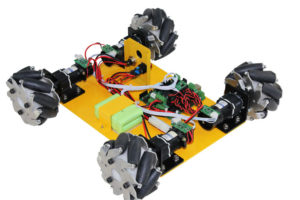
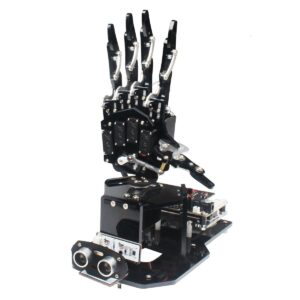
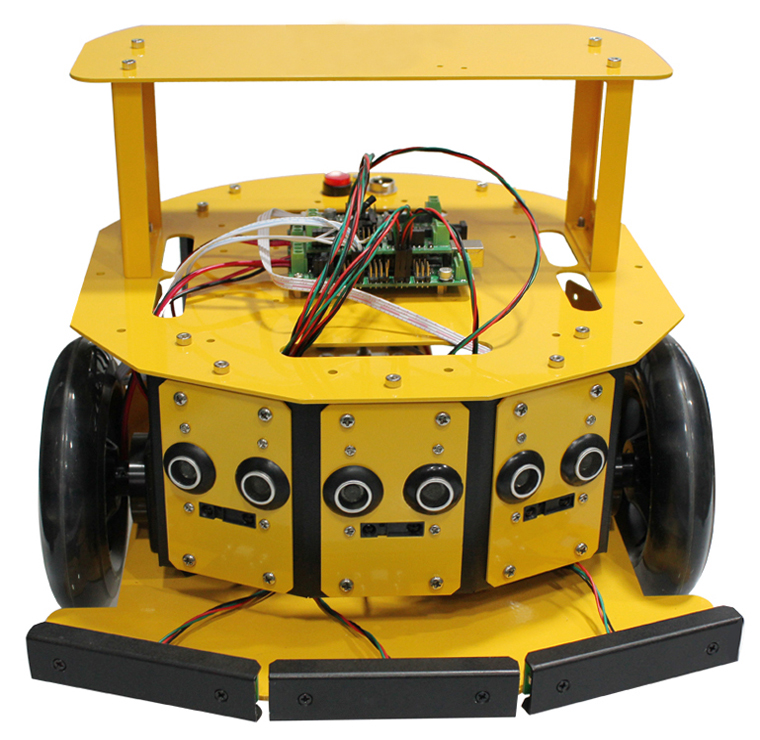

Reviews
There are no reviews yet.